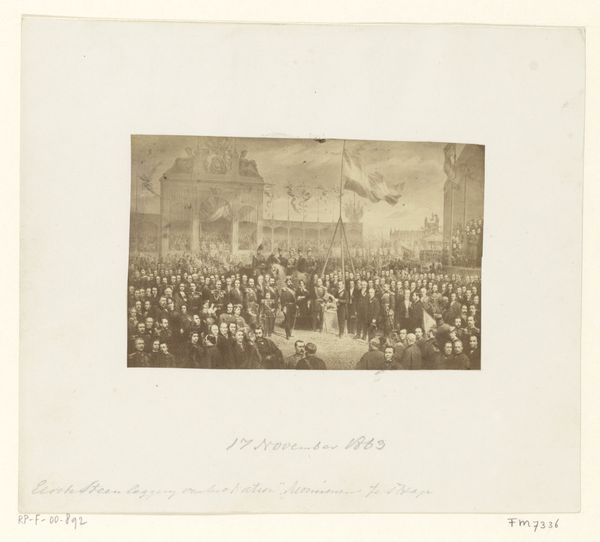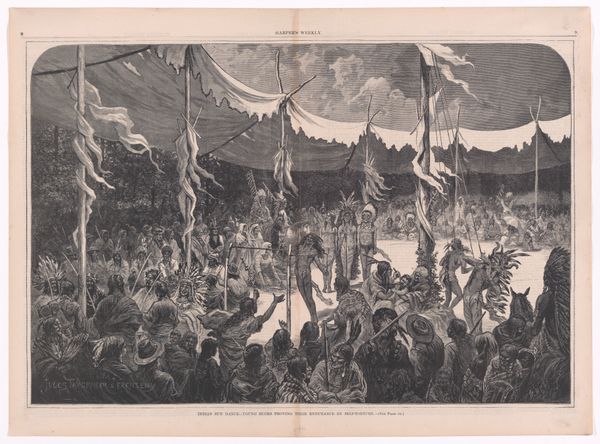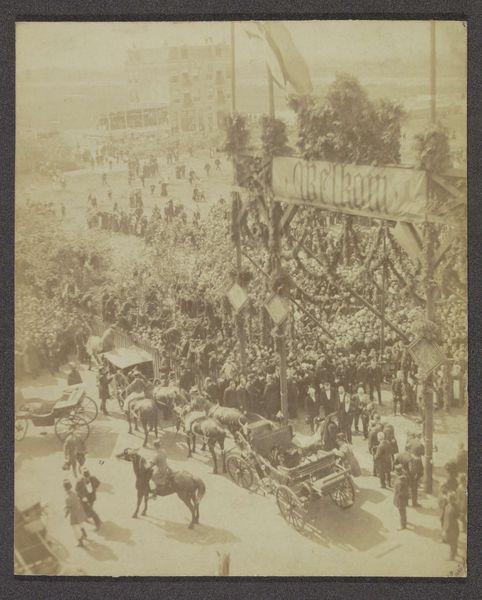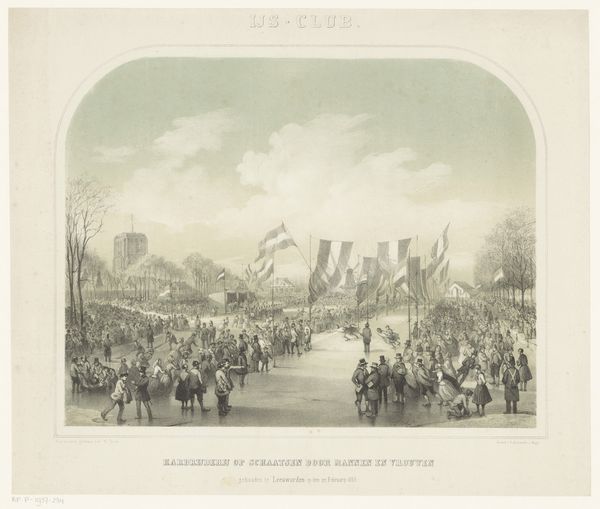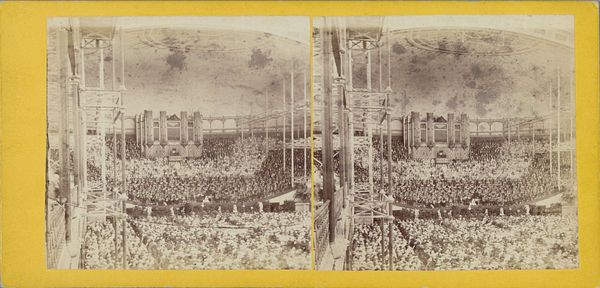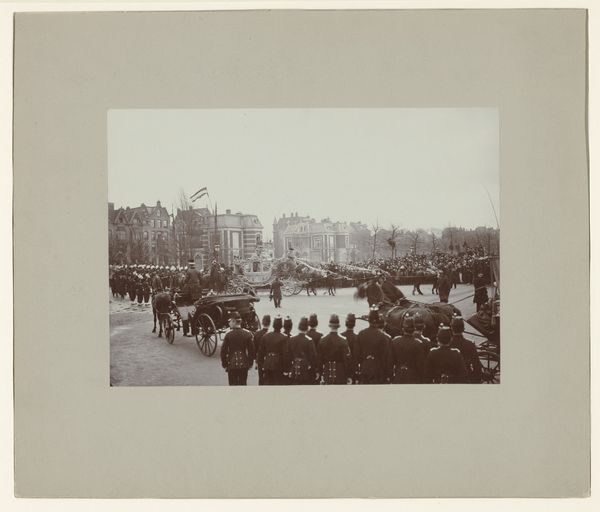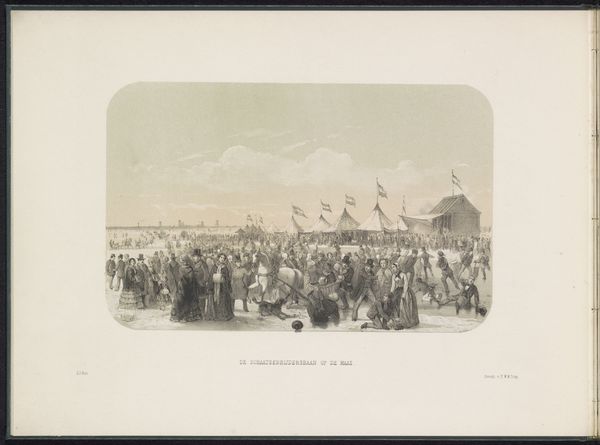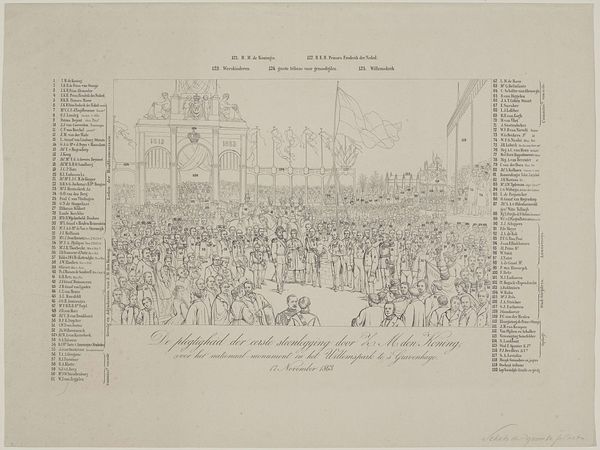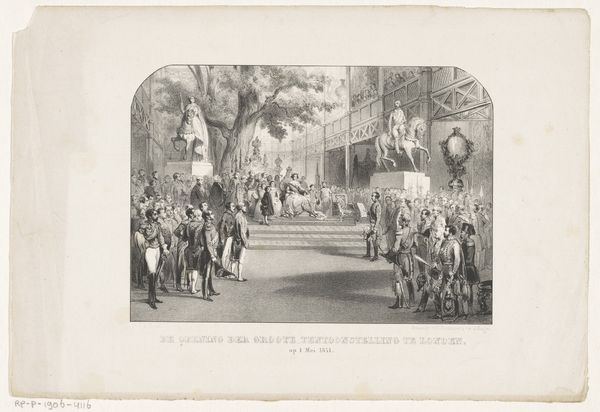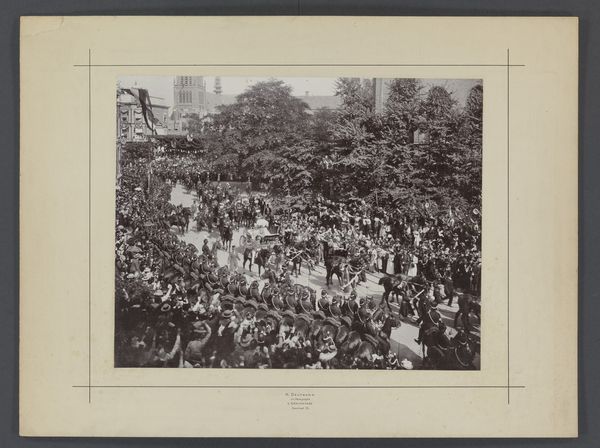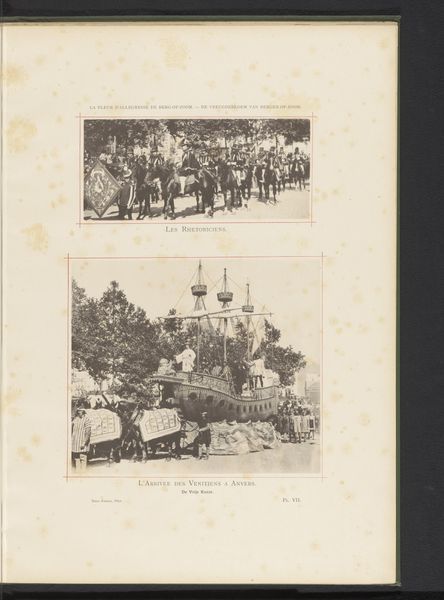
Sangerfesten i Arendal 1859. Festen på Skydebanen. 1859
0:00
0:00
graphic-art, lithograph, print
#
graphic-art
#
lithograph
# print
#
landscape
#
genre-painting
Dimensions: 323 mm (height) x 260 mm (width) (bladmaal)
Curator: Adolph Kittendorff's 1859 lithograph, "The Song Festival in Arendal" or, more specifically, "The Party at the Shooting Range", offers us a glimpse into a significant cultural moment in Norway. It's currently part of the collection at the SMK, Statens Museum for Kunst. Editor: It looks so busy. My first impression is a feeling of organized chaos, a sea of people underneath this dramatic landscape of flags and a reviewing stand crowded with important looking people. The monochrome lends a serious tone to the festivities. Curator: Indeed, what seems like chaos to us now was likely a meticulously structured social event. Song festivals like these were deeply connected to the rise of national romanticism. The growing middle class wanted a shared cultural identity rooted in folklore, language and landscape. Editor: So these gatherings served as sites for reinforcing national identity. But I wonder who is truly being represented here? Looking at the faces, or rather the approximations of faces in the lithograph, I wonder about the role and representation of marginalized groups at such festivals? Curator: That is precisely the kind of question we should be asking. Historical images like this tend to highlight the dominant narratives. But these song festivals created a space for collective identity formation, although with limitations. Editor: Looking closely, I notice how strategically the flags are placed. They aren't just decorative; they visually stake a claim, almost literally planting the idea of nationhood in the landscape itself. Curator: The lithographic technique itself is important. Prints like these could be reproduced relatively easily, making this imagery accessible to a broader public, reinforcing national sentiments beyond the elites at the party. Editor: I am sure these images served to consolidate power but looking closer now, I see such a diverse range of attire, hats and the hint of faces. It suggests these collective activities also functioned as crucial opportunities for cross-class dialogue at a specific moment in Norway’s socio-political transformation. Curator: Precisely. It highlights how the project of nation building and nationalism intersected with the project of democracy and equality in 19th-century Europe. Editor: Seeing this artwork makes me consider the ongoing role of collective gatherings in constructing social identities, both those included and unfortunately excluded. Curator: Yes, these visual documents help us reflect on what has changed in the century since, and what echoes remain in our contemporary societies.
Comments
No comments
Be the first to comment and join the conversation on the ultimate creative platform.
